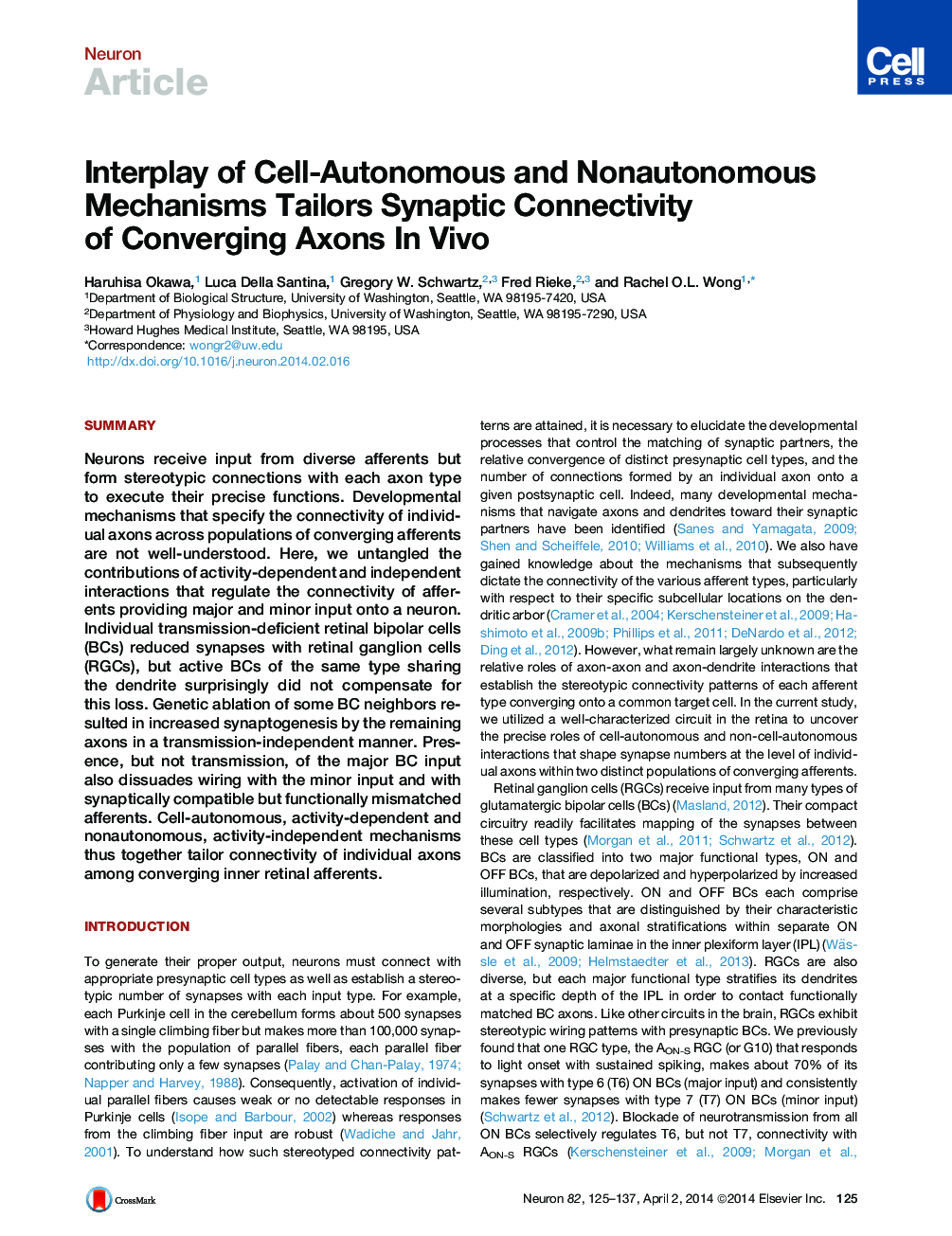| Article ID | Journal | Published Year | Pages | File Type |
|---|---|---|---|---|
| 4321086 | Neuron | 2014 | 13 Pages |
•Activity regulates connectivity of an individual axon cell autonomously•Axonal tiling restricts synaptic compensation by active axons•Presence, but not activity, of major input limits connectivity with minor input•Major input averts synaptogenesis with functionally mismatched axons
SummaryNeurons receive input from diverse afferents but form stereotypic connections with each axon type to execute their precise functions. Developmental mechanisms that specify the connectivity of individual axons across populations of converging afferents are not well-understood. Here, we untangled the contributions of activity-dependent and independent interactions that regulate the connectivity of afferents providing major and minor input onto a neuron. Individual transmission-deficient retinal bipolar cells (BCs) reduced synapses with retinal ganglion cells (RGCs), but active BCs of the same type sharing the dendrite surprisingly did not compensate for this loss. Genetic ablation of some BC neighbors resulted in increased synaptogenesis by the remaining axons in a transmission-independent manner. Presence, but not transmission, of the major BC input also dissuades wiring with the minor input and with synaptically compatible but functionally mismatched afferents. Cell-autonomous, activity-dependent and nonautonomous, activity-independent mechanisms thus together tailor connectivity of individual axons among converging inner retinal afferents.
